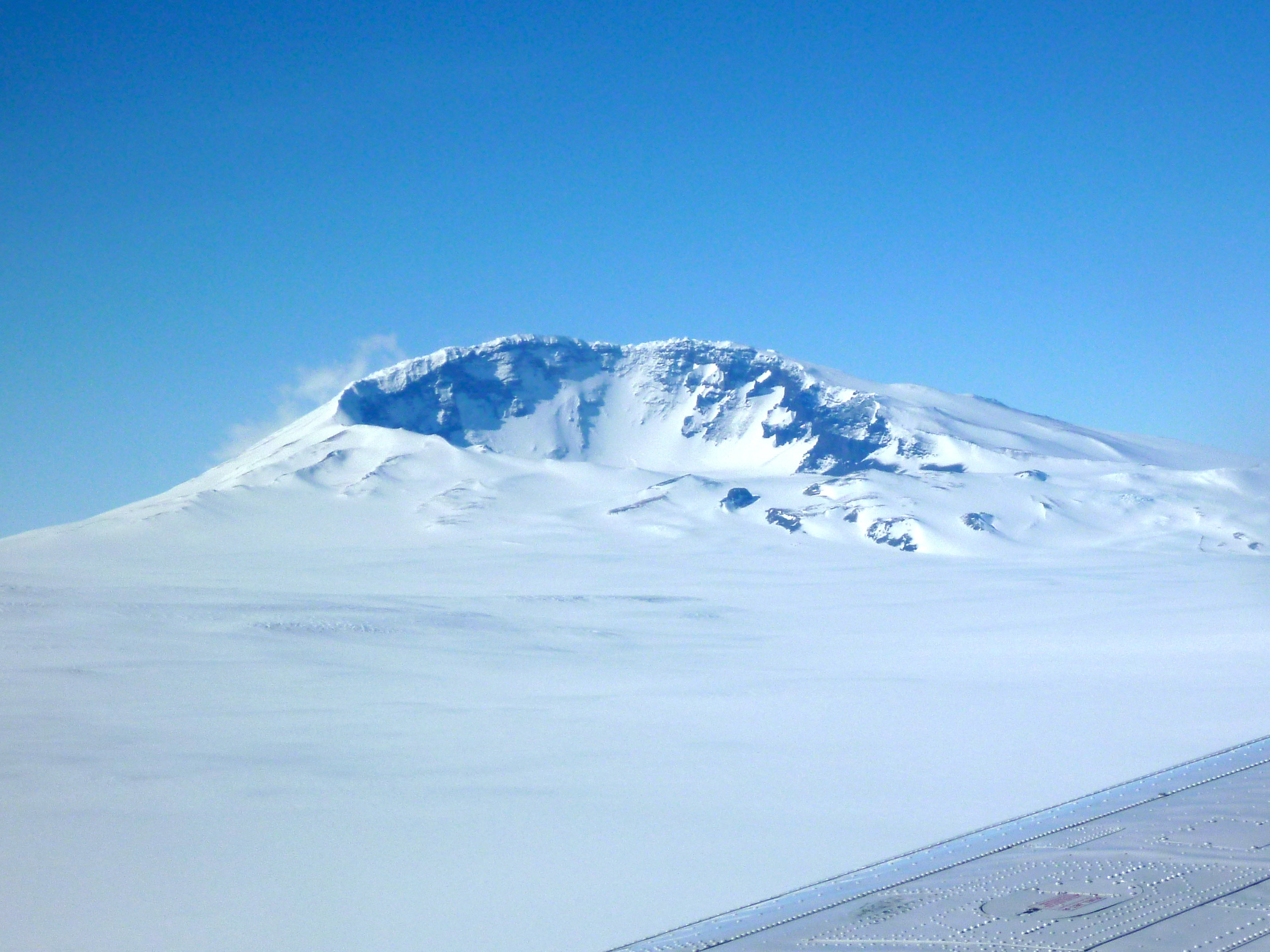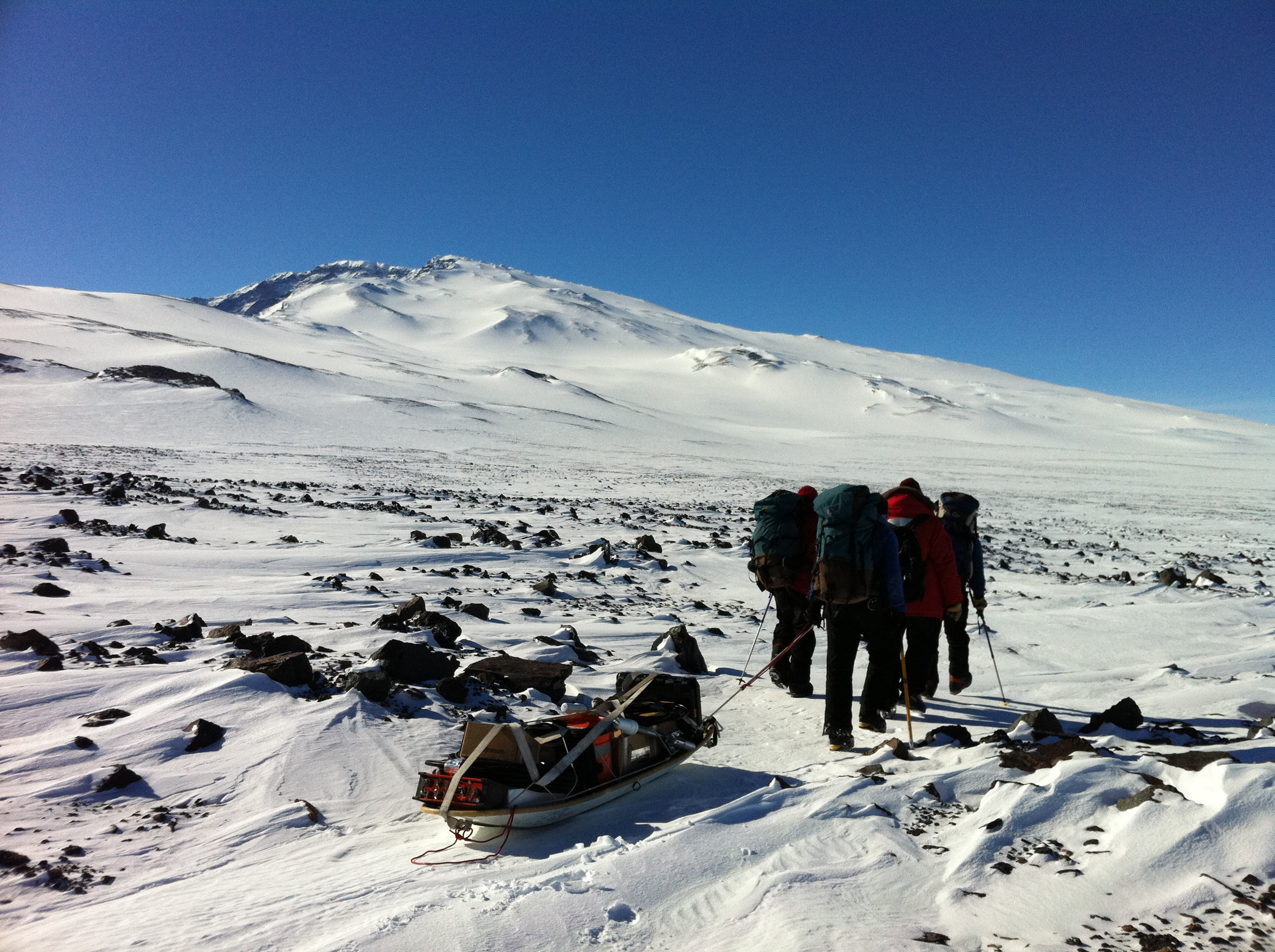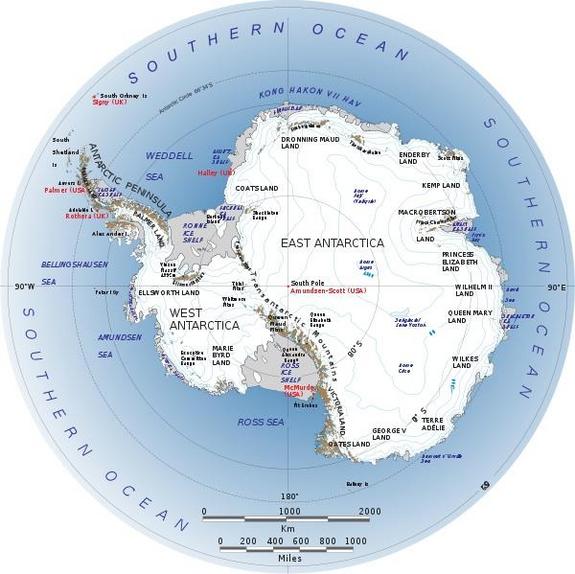
Active Volcano Discovered Under Antarctic Ice Sheet

Earthquakes deep below West Antarctica reveal an active volcano hidden beneath the massive ice sheet, researchers said today (Nov. 17) in a study published in the journal Nature Geoscience.
The discovery finally confirms long-held suspicions of volcanic activity concealed by the vast West Antarctic Ice Sheet. Several volcanoes poke up along the Antarctic coast and its offshore islands, such as Mount Erebus, but this is the first time anyone has caught magma in action far from the coast.
"This is really the golden age of discovery of the Antarctic continent," said Richard Aster, a co-author of the study and a seismologist at Colorado State University. "I think there's no question that there are more volcanic surprises beneath the ice."
The volcano was a lucky find. The research project, called POLENET, was intended to reveal the structure of Earth's mantle, the layer beneath the crust. In 2010, a team led by scientists from Washington University in St. Louis spent weeks slogging across the snow, pulling sleds laden with earthquake-monitoring equipment. [Images: Trek Across Antarctica]
Right place, right time
Two earthquake swarms struck beneath the researchers' feet in January 2010 and March 2011, near the Executive Committee Range in the Marie Byrd Land region of the continent. As the researchers later discovered, the tremors — called deep, long-period earthquakes (DLPs) — were nearly identical to DLPs detected under active volcanoes in Alaska and Washington. The swarms were 15 to 25 miles (25 to 40 kilometers) below the surface.
"It's an exciting story," said Amanda Lough, the study's lead author and a graduate student in seismology at Washington University in St. Louis. Though there were no signs of a blast, a 3,200-foot-tall (1,000 meters) bulge under the ice suggests the volcano had blasted out lava in the past, forming a budding peak.
Sign up for the Live Science daily newsletter now
Get the world’s most fascinating discoveries delivered straight to your inbox.

"We can say with pretty high confidence that there wasn't an eruption while we were out there," Lough told LiveScience's OurAmazingPlanet. "We had people installing [seismometer] stations and flying airborne radar over the ice. But from the bed topography, we can see there is something building up beneath the ice."
Scientists think that underground magma and fluids pushing open new paths and fracturing rock cause deep, long-period earthquakes. Many active volcanoes in Alaska's Aleutian Islands have frequently produced these deep earthquake swarms without any signs of impending eruptions. However, researchers also monitor the tremors because a sudden uptick in shaking was seen before eruptions at Mount Spurr and Mount Redoubt in Alaska.
A volcanic flood
If the volcano in Antarctica did erupt, it would melt the bottom of the ice sheet immediately above the vent. Scientists aren't sure what would happen next. In Iceland, volcanic eruptions can melt glaciers, causing massive floods called jökulhlaups. But the ice above the Antarctic volcano is more than a half-mile (1 km) thick.
"How West Antarctic ice streams would react to an eruption a hundred or more kilometers [60 miles] inland from the grounding line is a yet-to-be-answered question," said Stefan Vogel, a glaciologist with Australian Antarctic Division who was not involved in the study. The grounding line is the spot where glaciers detach from rock and float on water.
"There is certainly a need for more research, both in mapping the distribution and monitoring the activity level of subglacial volcanic activity beneath ice sheets, as well as studying the impact of subglacial volcanic activity on the hydrological system of glaciers and ice sheets," Vogel said in an email interview.
It would take a super-eruption in the style of Yellowstone's ancient blowouts to completely melt the ice above the active volcano, Lough and her co-authors calculated. And if the volcano under the ice is similar to ones close by, such as Mount Sidley, there's no risk of a super-eruption. [Big Blasts: History's 10 Most Destructive Volcanoes]
Instead, the millions of gallons of meltwater might simply hasten the flow of the nearby MacAyeal Ice Stream toward the sea.
"People hear the word 'volcano' and get caught up in the idea that it will change the way the ice sheet works, but this stuff has been going on underneath the ice [for millions of years], and the ice sheet is in balance with it," Lough said. "Everyday magmatism isn't enough to cause major problems."
Hugh Corr, a glaciologist at the British Antarctic Survey who also discovered a buried Antarctic volcano, said an eruption could have a big effect, but it's difficult to quantify.
"The biggest effect on the West Antarctic Ice Sheet is still climate change — warming the ocean, melting the ice shelves. That's the most immediate risk, compared to if a volcano might go off," said Corr, who was not involved in the study.
A geologic puzzle
Signs of active and extinct volcanoes pop up all over Antarctica. Ash layers and lava indicate volcanoes spouted while the continent froze during the past 20 million years or more. (An 8,000-year-old ash layer sits above the newly found volcano, but it comes from Mount Waesche, a nearby peak.)
"The [West] coast of Antarctica is like a ring of fire," Corr said.

The earthquake swarms line up with older volcanoes in the Executive Committee Range, suggesting the volcanic activity there is slowly migrating south by 6 miles (9.6 km) every million years. This migration is perpendicular to the motion of Antarctica's tectonic plate, so a hotspot or mantle plume is not feeding the volcanoes, Lough said. (A mantle plume should make volcanoes that line up parallel to plate motion, like those of the Hawaiian Islands.)
The big mystery is figuring out why the volcano and its forerunners even exist. "Antarctica is certainly one of the most fascinating and enigmatic of all of Earth's continents," Aster said. [Video - Antarctica: Solving Geologic Mysteries]
Let's set the scene. Antarctica is split by an incredible mountain range. Imagine if Utah's spectacularly steep Wasatch Mountains cleaved North America from Texas all the way to Canada. That's what the Transantarctic Mountains are like. In the West, the land dives off into a deep rift valley, where the crust has been tearing apart for about 100 million years. The newly found volcano sits on the other side of this rift, in a higher-elevation region called Marie Byrd Land.
While the torn crust may seem like the best explanation for Antarctica's many volcanoes, many of the peaks fit no obvious pattern. Rifting and volcanism in Antarctica could be like nowhere else on Earth. "What is going on with the crust in Antarctica is still puzzling," Lough said.
Email Becky Oskin or follow her @beckyoskin. Follow us @OAPlanet, Facebook & Google+. Original article on LiveScience's OurAmazingPlanet.











